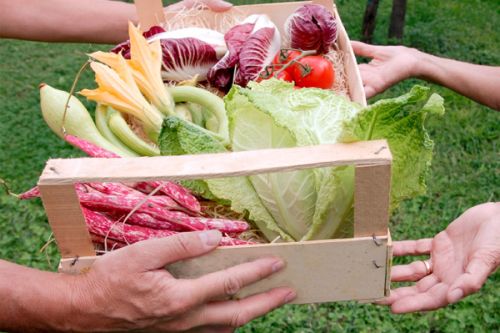
TRUMP SAYS: HUNTER MAKES FORTUNE FROM SHADY DEALS!
BIDEN FAMILY STINKS TO HIGH HEAVENS OF CORRUPTION!
DON'T GET LEFT OUT: HUNTER MUST BE STOPPED!


Based on the current situation with the pandemic and people emptying grocery stores because of it, there’s a desire to want to keep your vegetables fresh as long as possible. It’s possible to get more life out of them when utilizing cold storage.
Most preppers will use this method of storage in the fall after harvesting their crop for the year from their own garden. But it can be used to keep store-bought produce fresh too, even though those vegetables are not as fresh. This method won’t work for all fruits and vegetables, but most can be stored this way.
Also, keep in mind, cold storage won’t work in places where it stays warm year-round, or climates that don’t get a “full winter.” Your vegetables also won’t last forever. When planting this spring, choose your vegetables wisely (what will grow well in your area and what will store well based on climate). Keep an eye on them throughout the winter and don’t be shy about using them!
Follow These General Rules of Food Storage
You should also consider which vegetables need dry storage and which will require moist storage. The Spruce has a great article detailing the storage conditions for each vegetable.
LOCATIONS:
You likely have one of the following places available in your home to storage some healthy vegetables over the winter months.
Take the time to look up each vegetable and the conditions they need to be stored in. Not all are the same. To make things more simple, you can choose to plant vegetables that will all store in relatively similar conditions, and that will make things much easier.
H/T [The Spruce]

It Took 22 Years to Get to This Point
Two domestic cats have died after drinking raw milk recalled for bird flu risk in California. A...
This article was originally published by Rhoda Wilson at The Exposé. We have all become familiar...
Conservative political commentator Tucker Carlson took part in a wide-ranging interview that was...
Commenting Policy:
Some comments on this web site are automatically moderated through our Spam protection systems. Please be patient if your comment isn’t immediately available. We’re not trying to censor you, the system just wants to make sure you’re not a robot posting random spam.
This website thrives because of its community. While we support lively debates and understand that people get excited, frustrated or angry at times, we ask that the conversation remain civil. Racism, to include any religious affiliation, will not be tolerated on this site, including the disparagement of people in the comments section.


Hey, remember the time that the settlers deliberately handed out blankets contaminated with the small-pox virus on them to Native Americans to help the Natives in a “charitable act”?
This is nothing new in America! If people from the government show up, be certain that the only person that they are there to help is themselves!
Sean Penn wrote a letter to the Guardian calling for Martial Law! What a dissapontment that was to me to read that! Sean Penn also is anti-war, anti-Trump, and pro-Iran. I thought that he had more decency than calling for Martial Law! Just one more reason not to trust anyone!
So, if this is the end of civilization, why are the Silicon Valley shepherds not in New Zealand now herding shepp rather than people? We can hear them drooling coronavirus drool over the prospect of getting away with complete financial fraud for the third time, and the greedy pigs are lined up at the trough for more!
Please, get out of America and herd sheep instead of people! They won’t figure out that you are spying on them and selling sheep pornography to perverted freaks!
build or buy a wire rack to get as much sliced fruit in your oven as possible. set oven to140f leave for around 8 hours. put dried food in food saver bag vacuum seal. toss in the freezer. no need to buy a dehydrator. food saver machine is one of the best investments you can make.